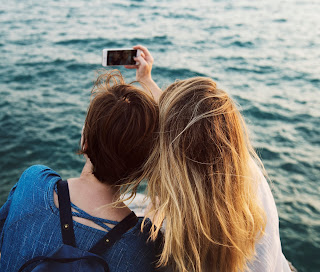Often people ask me how important is posture or space in meditation? Should we practice in a group setting or practice alone? Is it essential to light a candle while meditating? Should I keep me eyes open or shut? Is there a specific time of day to practice? These questions are relevant not only for mindfulness meditation but other forms of meditation too such as Chakra meditation,or guided visualization.
Here is a primer on mindfulness meditation but before we begin, it is worth reminding ourselves, how mindfulness is defined by Jon Kabat-Zinn, "Mindfulness is paying attention, in a particular way, on purpose, in the present moment, and non-judgmentally."
Posture: While there is a benefit in sitting upright, perhaps cross legged or on a chair, with your eyes gently closed, a particular posture is not mandatory in many meditation practices. Often people prefer to lie down or some choose to meditate while walking, running or even swimming where they feel they become one with their surroundings.
Space: Where we chose to practice can seem very important to us. For some people a certain kind of space is critical to meditate, perhaps a room where there is a lot of natural light or a room with no natural lighting. Some may find that meditating in a natural surrounding, be it at a lake front or the mountains, may help them zone in. The rhythmic sound of water can be especially calming to some or the gentle wind ruffling the hair and caressing the skin can be relaxing to others. And yet, there are those who meditate while they ride the bus to work every morning.
Time of the day: Mornings work very well for many people as the mind is usually clear and rested. Indeed, sages, gurus and meditators over thousands of years have preached the importance of starting the day with meditation. However, thousands prefer meditating just before going to bed while others prefer short one minute sessions through the day. Read my article on Traffic control (controlling your mental clutter) for more.
Group setting: Meditating in a group helps many meditators because it instills a sense of routine and discipline. They find a group practice invigorating and the collective energy very beneficial. And yet, few prefer to practice alone stating that their meditation is their own individual journey.
Accessories: Candles, light music, a meditation cushion, flowers or a statue of Buddha or even apps and meditation gadgets are accessories that many feel are essential to the practice of mindfulness meditation. More about commercialization of mindfulness in a later post.
In reality, you do not need any special equipment, commodities or space to meditate. Yes, space, accessories etc may seem important for beginners but with experience and practice, you might find them (or not) to be trappings and you might just find yourself dropping these accoutrements at some point in time. You also do not need to meditate at a particular time of day. Recent studies conducted by Harvard Medical School indicate that meditation is beneficial at any time of the day. Consistency is key. More important than the angle of your spine, or the music (or lack thereof) in the background, is what is happening in your mind, or even what you are doing in your mind? Are you enjoying being in the moment?
Likewise, while formal meditation sits are extremely important and help us to get into the zone, ultimately, the ability of transferring this feeling of calmness, acceptance and stability to our everyday routine and into our personality is what mindfulness meditation is all about. And if you feel anxiety or worry creep in, consciously pausing your thoughts, anchoring yourself into your breath or a visual imagery may transport you back into the zone. It is more important to be mindful where ever you are, and in whatever you are doing. Space, posture, setting, length of practice or the time of the day is not as important as your intention to practice. May your meditation or mindfulness be your own, however you may choose to define it. May you discover it in a mindful way that embodies your truth and your dignity.


















